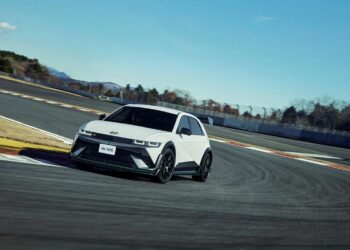How the American Drift Scene Created The Best Drift Show in the world
Drifting in the United States has evolved from a grassroots movement into a professional motorsport with a massive following. The journey of drifting in the U.S. is a story of adaptation, innovation, and the relentless passion of drivers and fans who have embraced this exciting sport. Today, the U.S. is home to some of the most competitive drifting events in the world, with Formula Drift standing at the forefront.
The Early Days: Importing Drifting to the USA
Drifting first made its way to the United States in the late 1990s, inspired by the burgeoning drift culture in Japan. Enthusiasts in the U.S. were drawn to the style and skill required in drifting, as well as the appeal of Japanese car culture. Early adopters of the sport were often car enthusiasts who were already part of the import tuning scene, which focused on modifying Japanese cars for performance and aesthetics.
One of the pivotal moments in the introduction of drifting to the U.S. was the release of the anime series “Initial D,” which popularized drifting among a wider audience. The series, which showcased the underground drift scene in Japan, inspired many American fans to take up the sport. Around the same time, videos of Japanese drifting events and competitions began circulating in the U.S., further fueling interest.
As more people became interested in drifting, grassroots events started to pop up across the country. These early events were often informal and held in parking lots or abandoned industrial areas. They provided a platform for drivers to practice and showcase their skills, as well as to network with other enthusiasts.
The Birth of Formula Drift
The establishment of Formula Drift in 2003 marked the beginning of professional drifting in the United States. Founded by Jim Liaw and Ryan Sage, Formula Drift was the first official drifting series in the U.S., and it quickly became the premier drifting championship in North America. The series adopted a format similar to Japan’s D1 Grand Prix, with drivers competing in both solo runs and tandem battles.
Formula Drift’s success can be attributed to its ability to attract top talent, both domestically and internationally. Early competitors included drivers like Rhys Millen, Chris Forsberg, and Vaughn Gittin Jr., who became household names in the drifting community. The series also brought over Japanese drift stars like Nobuhiro “Monster” Tajima and Ken Nomura, who helped to elevate the level of competition.
The popularity of Formula Drift grew rapidly, thanks in part to its accessibility. Events were held at major racetracks across the country, and the series was broadcast on television and later streamed online, reaching a wide audience. Formula Drift’s emphasis on showmanship, with smoke-filled slides and close tandem battles, made it a hit with fans and helped to establish drifting as a legitimate motorsport in the U.S.
The Growth of the Drifting Scene in the USA
As Formula Drift gained traction, the overall drifting scene in the U.S. expanded. Grassroots events continued to thrive, with local organizations hosting competitions and drift days where drivers could hone their skills. These grassroots events served as a breeding ground for new talent, many of whom eventually made their way to the professional ranks.
The growth of the scene was also supported by the aftermarket industry, which began to cater specifically to drifters. Companies started producing parts and accessories designed for drifting, from suspension components to body kits. This made it easier for enthusiasts to build drift-ready cars, further fueling the sport’s popularity.
The cultural impact of drifting in the U.S. was also significant. Drifting influenced car culture, with many enthusiasts adopting the aggressive styling and performance-focused modifications seen on drift cars. The sport also had an impact on media, with drifting becoming a popular subject in movies, video games, and car shows.
The Current State of Drifting in the USA
Today, drifting in the U.S. is more popular than ever. Formula Drift continues to be the pinnacle of the sport, attracting drivers from around the world and showcasing some of the best drifting talent on the planet. The series has expanded to include multiple rounds across the country, and it continues to push the boundaries of what’s possible in drifting.
Grassroots drifting also remains strong, with events held regularly in virtually every state. These events provide a vital space for the community to grow, allowing new drivers to get involved and experienced drivers to refine their skills. The community-driven nature of grassroots drifting ensures that the sport remains accessible and vibrant.
The U.S. has also seen the rise of specialized drifting facilities, such as Englishtown Raceway Park in New Jersey and Willow Springs in California, which offer dedicated drift tracks for practice and competition. These facilities have become hubs for the drifting community, hosting everything from amateur drift days to professional events.
Conclusion
Drifting in the USA has come a long way from its grassroots beginnings to becoming a professional motorsport with a dedicated following. The growth of the sport can be attributed to the passion of the community, the support of the aftermarket industry, and the success of events like Formula Drift. Today, the U.S. stands as one of the leading countries in the world of drifting, with a scene that is diverse, innovative, and constantly evolving.










